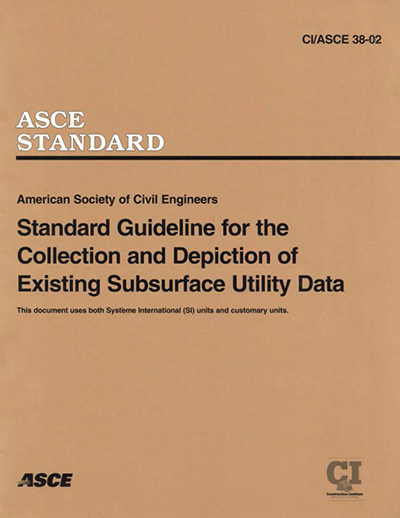TOC (CI/ASCE 38-02)
Provisions
CommentaryGENERAL
In the past, many utilities were relatively easy to detect with low-cost methods. Utilities were generally metallic, electrically continuous, linear, shallow, and logically routed. Minimally trained technicians with limited equipment had a fair chance of finding these metallic utilities. This is changing rapidly with the advent of new materials (e.g., fiberoptic glass, plastics, etc.), congested rights-of-way, and new construction methods such as directional drilling. These changes are significantly complicating the underground environment, subsequently requiring the use of more and improved methods and better-trained technicians, performing under the responsible charge of the appropriate professionals. Utility detection in some circles is still considered an art rather than its true status as an interpretive science. Surface geophysical techniques are constantly evolving, mainly because of our ability to collect and manipulate large amounts of data. There are currently many surface geophysical methods available for utility detection.
Surface geophysical methods all vary in their effectiveness because of geology, backfill type and homogeneity, utility material type, methods of joining utility “segments,” utility condition, depth, soil moisture, other nearby buried objects, ground surface type and smoothness, ambient noise, ambient temperature, surface conditions, stray and/or interfering energy fields, and equipment manufacturers’ biases. Surface geophysical methods all bear their own costs in terms of equipment, time, and training of personnel. Therefore, the key to successful and cost-effective utility detection becomes one of risk management decisions, coupled with knowledge of earth and utility features and equipment capabilities. These decisions are inherently the domain of the appropriate professionals and require a standard of care. This section is intended to be an overview of available methods, not a primer on theory or detailed operating and interpreting “knowhow.”
There are significant differences in techniques, methodology, and equipment necessary between identifying the potential presence of a utility (a utility search) and tracing a utility’s path (for the purpose of producing a map). Most utility mapping projects for design purposes will involve both a search and a trace requirement. For methods and/or techniques that use a survey grid with data collected only at the intersecting grid points, it is usually unwise to “connect the dots” of utility indications with guesswork. These utilities should be depicted at quality level B only at the grid points. Between broadly spaced grid points, the utility data is quality level D if there are records. If there are no records, there is no indication that there is a utility present, and it should not be depicted at any quality level without other methods to collect sufficient data for interpretation. In other words, grid techniques are good for search, but not trace, requirements unless the grid spacing is small enough to eliminate any doubt of utility turns or continuity (usually dependent on utility size and material).

Commentary